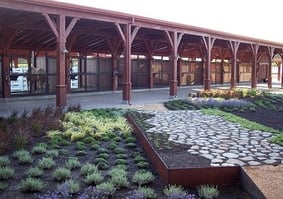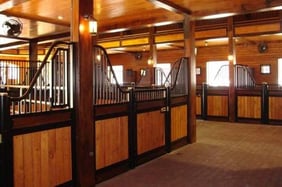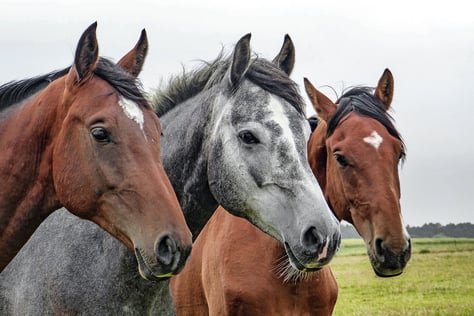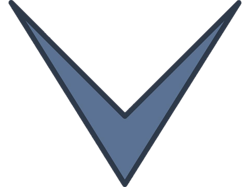 You've made the decision - THIS is the year you're building your dream barn! You've got the ideas, you've got the money, you've got the permits. Are you ready to go? Not quite.
You've made the decision - THIS is the year you're building your dream barn! You've got the ideas, you've got the money, you've got the permits. Are you ready to go? Not quite.
You might not have considered the fact that you may need to expand the idea of just building a barn and look at building a “facility” – barn, arena, turnout, storage, parking, etc. There are many options available to someone who wants to build just a barn, but once you start adding all the other structures, it can get a bit overwhelming. Here’s where an equine architect can definitely be worth the investment. You can even ask an equine architect to help you find the ideal equine property for your needs.
An equine architect can help translate your ideas or complete vision into reality. Typically, an architect is a person trained and licensed to plan, design, and oversee the construction of buildings and the space within the site surrounding the buildings. In the architectural profession, technical knowledge, management, and an understanding of business are as important as design. While not an official designation, an equine architect is someone who has experience and expertise in designing and building equine facilities. These can include horse parks, race tracks, show venues and boarding, training and breeding facilities.
The architect hired by a client is responsible for creating a design concept that meets the requirements of that client and provides a facility suitable to the required use. In that, the architect must meet with and question the client [extensively] to ascertain all the requirements and nuances of the planned project. This information, known as a program or brief, is essential to producing a project that meets all the needs and desires of the owner—it is a guide for the architect in creating the design concept. After a complete and thorough discussion with the client on all of their wants and needs, an architect accepts a commission from a client. The commission might involve preparing feasibility reports, building audits, the design of a building or of several buildings, structures, and the spaces among them.
The architect participates in developing the requirements the client wants in  the building. Throughout the project the architect can co-ordinate all aspects of the design team. This is where an equine architect can be a major help on larger facilities. They will know who offers the best footing or who is having a sale on stall components. Structural, mechanical, and electrical engineers and other specialists, are hired by the client under the supervision of the architect, who must ensure that the work is coordinated to construct the design in a timely and efficient manner.
the building. Throughout the project the architect can co-ordinate all aspects of the design team. This is where an equine architect can be a major help on larger facilities. They will know who offers the best footing or who is having a sale on stall components. Structural, mechanical, and electrical engineers and other specialists, are hired by the client under the supervision of the architect, who must ensure that the work is coordinated to construct the design in a timely and efficient manner.
Architects can also deal with local and federal jurisdictions about regulations and building codes. The architect might need to comply with local planning and zoning laws, such as required setbacks, height limitations, parking requirements, transparency requirements (windows) and land use. Some established jurisdictions require adherence to design and historic preservation guidelines.
Equine architect John Blackburn of Blackburn Architects, PC explains the difference between a barn builder and an equine architect. “A design/build contractor is selling a product, not a service, and is not often a trained architect, which limits his or her ability to think creatively outside of the box. With an equestrian architect, you’re purchasing a service rather than a product. The architect is there to resolve the needs of the owner, from overall site planning, programming, phasing, and design to overseeing the entire construction to make sure the barn is built as intended.”
While hiring an equine architect may seem like just another expense, your equine architect is there to help make your dream come true.
<span style="color:#000000;">Photo credit: Classic Equine Equipment</span>



